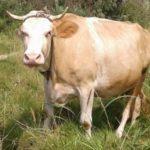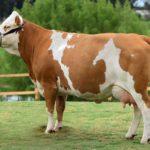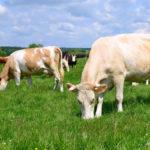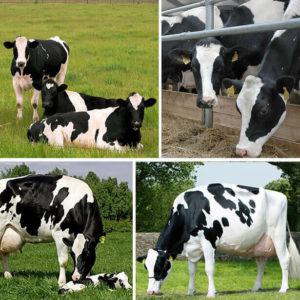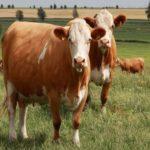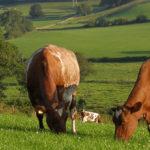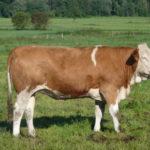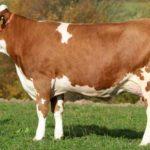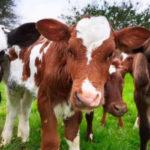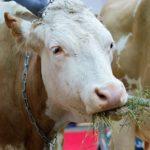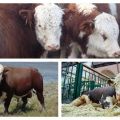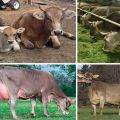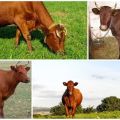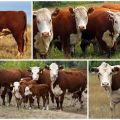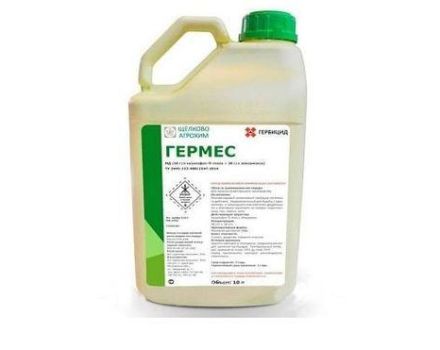Description and characteristics of Sychevsk cows, the rules for their maintenance
Among all varieties of cow breeds, some are more popular than others. This can be said about the Sychevsk breed of cows bred in Russia. Consider its characteristics and description, advantages and disadvantages, in what conditions you need to keep animals, how to properly feed and care for them, from what diseases you need to treat livestock.
Origin story
The breed was bred in the 1st half of the 20th century in the Smolensk region. For the basis of the Sychevsk breed, local cows were selected, animals of the Simmental breed were used as improvers. The best offspring were selected for several generations. Then the animals began to breed "in themselves", the standard of the new breed was approved in 1950. The goal of breeding the Sychevsky cows was achieved - large animals with a large yield of meat, distinguished by good health, unpretentious, giving a lot of milk turned out.
Today Sychevsky cows are bred in the Smolensk, Tver and Kaluga regions. Although the breed has already been registered, work on its improvement does not stop now. Individuals that are superior to the rest in valuable productive qualities are used for breeding.
Description and characteristics of the Sychevsk breed
In terms of exterior characteristics, the cows meet the standards of the breeds of meat and dairy products. The sizes and weights of males and females differ, in other characteristics the animals are similar to each other.
Calves
Calves gain weight quickly, every day their weight increases by 0.8-1.2 kg. They are born with a mass of 30-34 kg. By the age of six months, the calves weigh 200 kg, at 1.5 years they can weigh 350-400 kg.
Bulls
Males are larger than females by standard. The growth at the withers in animals is 145-150 cm, the body length is 155-185 cm. The withers are high and wide, large head, short neck, straight back. The color of the representatives of the Sychevsk breed is pale yellow, there are red and variegated red animals. Cow leather is elastic and moderately thick, therefore it is valued as a raw material for production.
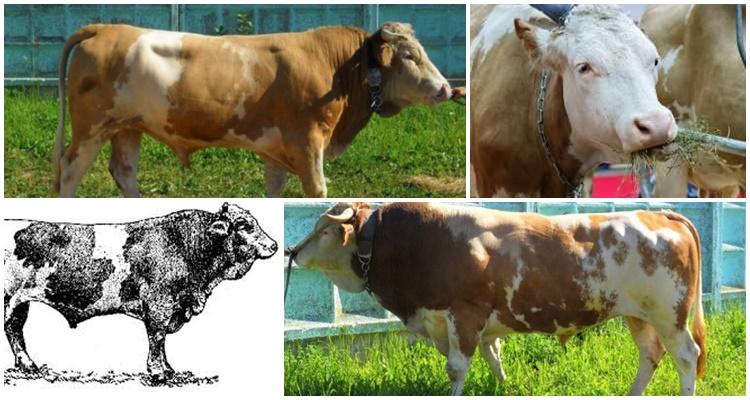
Cows
Females are slightly smaller in size, have less muscle mass. Correctly folded, the coat is short, silky, pale yellow, red, sometimes red-red. The height at the withers is 125-137 cm, the length of the body is 140-175 cm. The skin, like that of bulls, is of medium thickness, smooth. The weight of the cows is 550-600 kg. The queens have large udders with evenly developed lobes, so they are easy to milk. Milk has a delicate, harmonious taste, without the characteristic cow smell.
Breed types
In the breed, there are several intra-breed types that differ in conformation and productivity.
They have names that indicate their place of origin:
- Steppe. Animals have a strong constitution, they differ in that they give a lot of fat milk.
- Volga. Small animals, bred like dairy cattle.
- Ukrainian. The largest in the Sychevsk breed.
- Priuralskie. The main advantage is a large meat yield during slaughter.
- Siberian. Due to their origin, they tolerate low temperatures and other unfavorable conditions of detention.
All Sychevsky cows, regardless of the type, are characterized by unpretentiousness, the ability to gain weight on a standard diet, and strong immunity.
Positive and negative sides
When buying young Sychevsky cows, you need to take into account their characteristics.
Conditions of detention
For cows of the Sychevsk breed, you need to organize proper care, provide them with a balanced diet. Despite the specified unpretentiousness, as a property of the breed, animals should be kept in spacious, warm, light and clean stalls.
The barn should have moderate humidity and temperature, drafts should not be allowed, in winter - freezing. The room must be cleaned every day so that manure does not accumulate, and the litter must be changed. Clean feeders and drinkers from residues, care equipment. At least twice a year, carry out a complete disinfection of the barn, whitewash the walls with lime, and remove all waste without exception. Also, once a week, disinfect the room with the help of special preparations in the form of sprays.
When stalling, the duration of the lighting in the barn must be monitored. It should last 12 hours, in the fall and spring it is necessary to turn on the lamps to bring the illumination time to the desired level. Cows need to be taken daily for walks in a fenced area or pasture. In the absence of exercise, milk yield will decrease. Every day you need to clean the skin of the animal, wash dirty places.
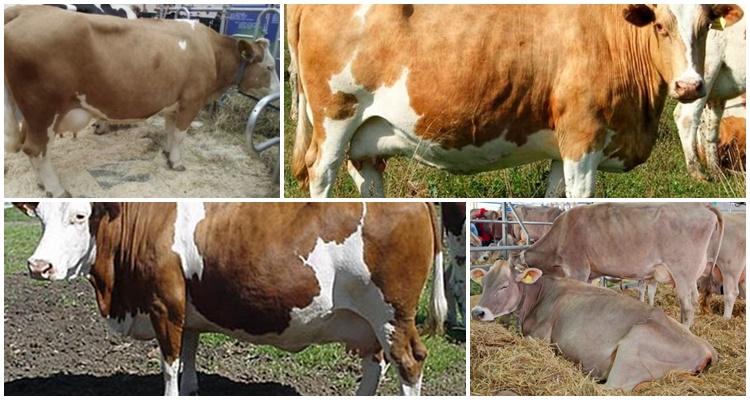
For each individual, it is necessary to leave enough area so that it can freely turn around and move to the feeder. This is at least 2 by 2 m. The barn and fences can be built from any material, but it is recommended that they be natural. Wood is the best choice from traditional materials. The floor is also made of wood, and not concrete, as is customary.
Despite the practicality of concrete, this is not the best option, since the floor is cold, animals, standing on it, get leg diseases.
Old hay or straw, sawdust are suitable for bedding. The thickness of the layer may be insignificant in summer, but in winter you need to fill in so much so that the cow, lying on the floor, does not catch a cold. Drinkers and feeders should be securely attached to the walls so that the cow does not overturn them. The containers must be roomy so that the animal can eat and drink without problems.
Feeding features
In summer, cows are grazed on fresh grass, the volume of which can be unlimited, the animals themselves will eat as much as necessary. In the evening they are fed with concentrates, root crops, vegetables. In winter, feeding consists of giving hay, silage, root crops and grain.It is necessary to gradually transfer animals from summer to winter diet in order to avoid eating disorders.
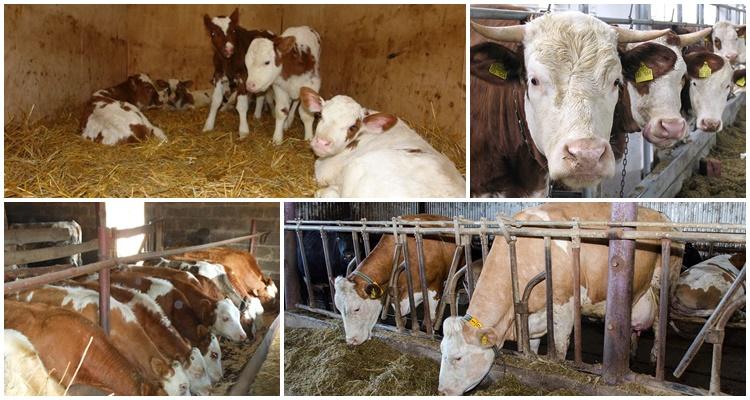
They are fed with vitamin and mineral complexes; gobies that are fattened for meat can be given 1-2 kg of compound feed per day. Pregnant and lactating cows, breeding bulls also need additional feeding.
Breeding Sychevsky cows
Calves of the Sychevsk breed are obtained from thoroughbred individuals or representatives of other breeds are used to obtain high-quality crosses. As already noted, the first time giving birth to cows can have a difficult birth, which must be remembered when giving birth to an animal.
Dairy calves do not have a stable immunity, therefore, until they grow up and get stronger, their health must be monitored, vaccinated against common dangerous infections.
An important point is feeding the calves. Since they are sensitive to lack of nutrients in the feed, it is necessary to properly formulate and follow the diet. Then the animals will grow up properly developed, with a good constitution, strong and hardy.
Frequent illnesses
The breed is characterized by resistance to common bovine diseases. Animals rarely get sick, but on condition that they are provided with suitable conditions for life. If cows are kept in damp, mud, cold or, conversely, hot, poorly fed, not walked, after a while this will lead to the fact that the animals will weaken, productivity will begin to decline.
Sychevskaya breed is traditional for growing in Russia. The animals are large and productive. From them you can get 2 types of products at once - tasty meat and fat milk. According to these characteristics, the breed is recommended for home breeding and breeding, as well as for keeping on private farms with small livestock. The breed possesses valuable agricultural characteristics and almost no flaws.
